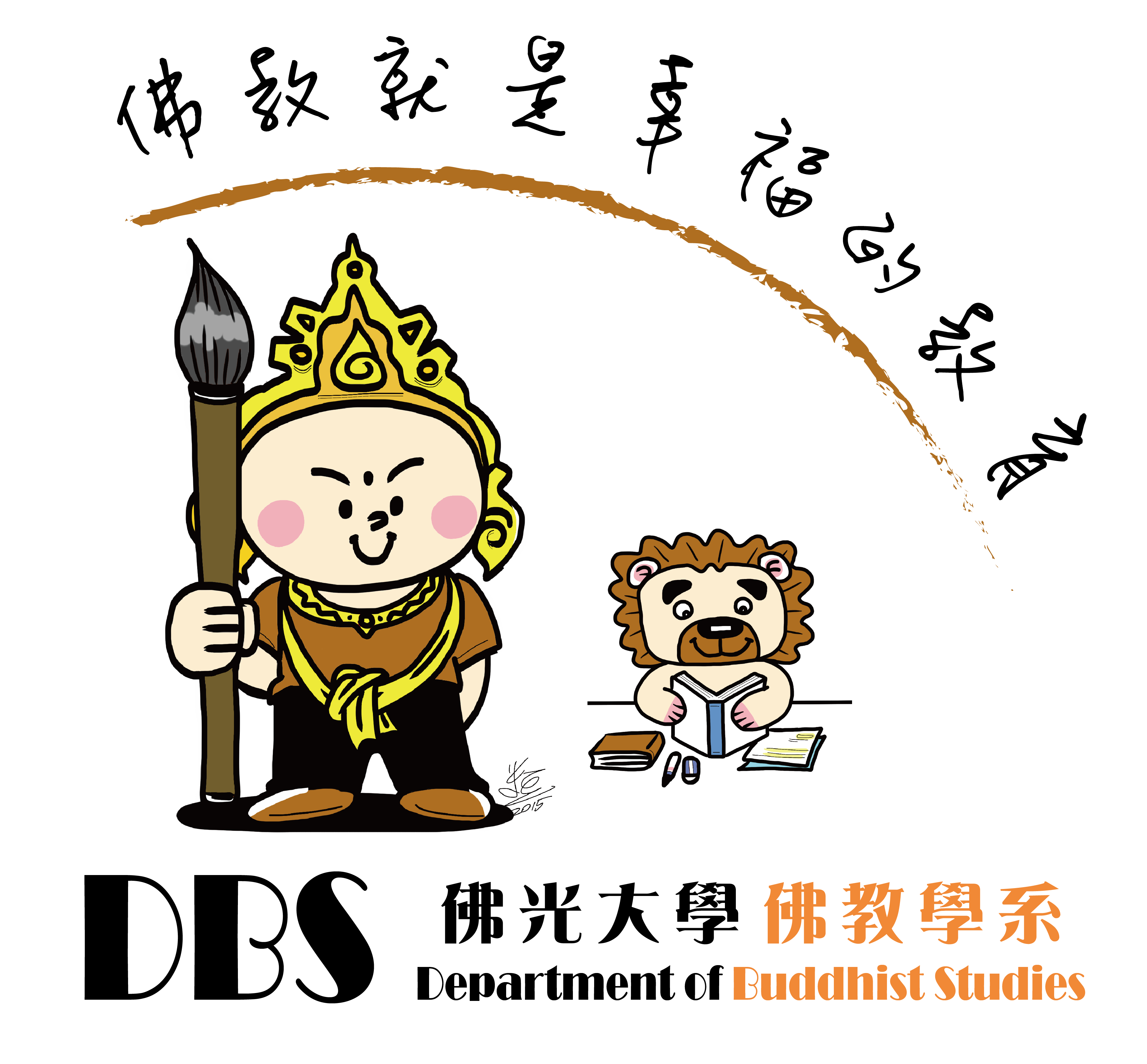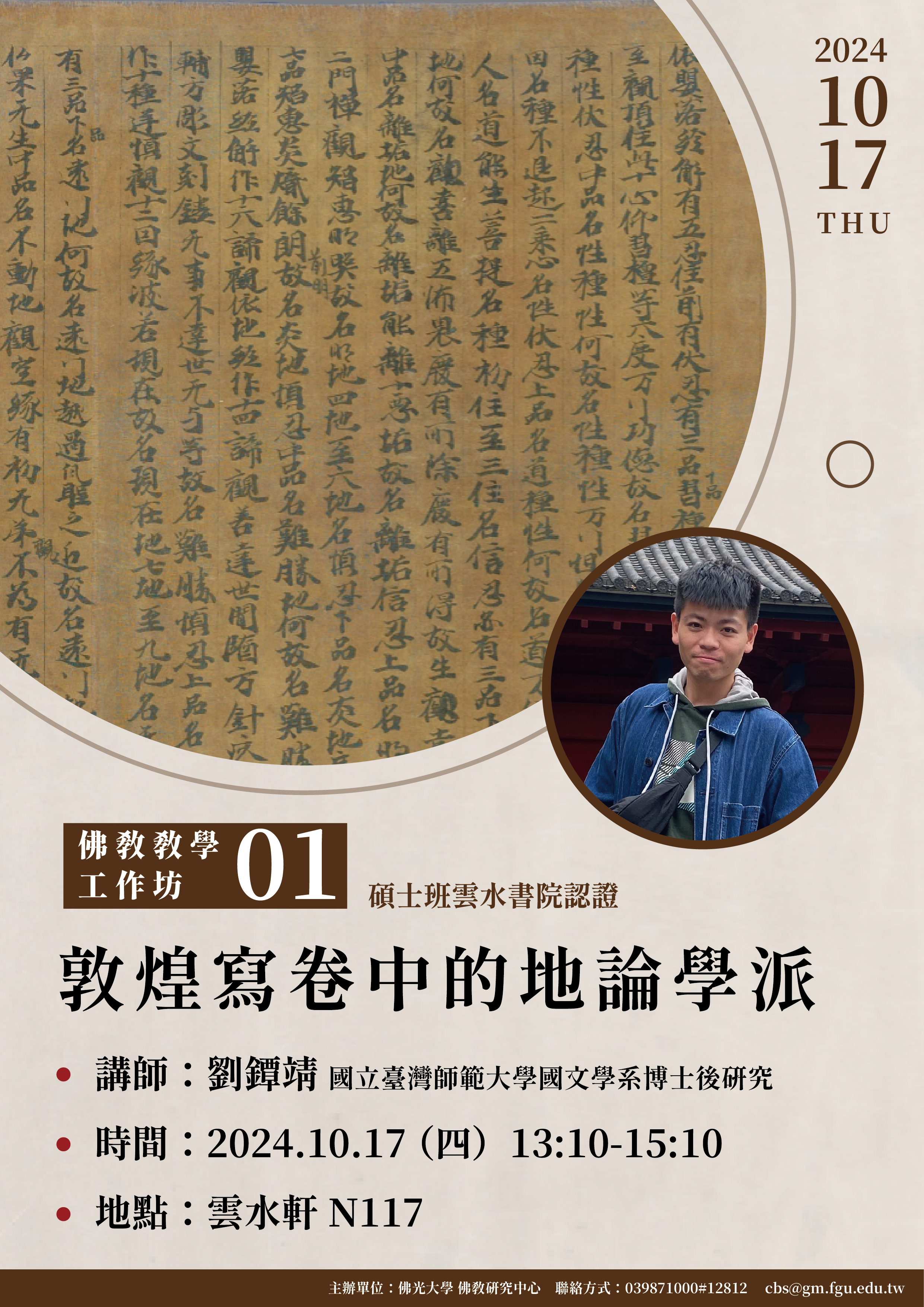On October 17, 2024, Fo Guang University's Buddhist Studies Center hosted a lecture titled "The Dīrgha Āgama School in Dunhuang Manuscripts," presented by Dr. Liu Tan-Ching, a postdoctoral researcher from the Department of Chinese Literature at National Taiwan Normal University. This event attracted many students, who engaged in a discussion on the manifestations of the Dīrgha Āgama School in the Dunhuang manuscripts and its influence on the development of Buddhist thought.
Dr. Liu’s research focuses on the core doctrines of the Dīrgha Āgama School and its evolution during the Northern and Southern Dynasties, Sui, and Tang periods, especially the ideological distinctions and characteristics of the Northern and Southern branches. Through analysis of Dunhuang manuscripts, he examined key concepts such as the Tathāgatagarbha, Ālayavijñāna, and Dharmadhātu Pratītyasamutpāda, and compared the positions of the Dīrgha Āgama and Yogācāra Schools, elucidating how these schools contributed to the construction of Buddhist theories of the time.
In his lecture, Dr. Liu shared his research methodology for Dunhuang manuscripts, underscoring the importance of document compilation and textual verification, and detailed the challenges and breakthroughs encountered in his research. For instance, the lack of clear authorship and content in Dunhuang manuscripts often complicates the identification of specific texts as belonging to the Dīrgha Āgama School. To address this, he employed techniques involving lineage analysis, terminology usage, and ideological stance to determine the school affiliation of the manuscripts.
Dr. Liu also highlighted the distinct philosophical differences between the Northern and Southern branches. The Southern branch places greater emphasis on the theories of Tathāgatagarbha and Dharmadhātu Pratītyasamutpāda, positing that the Buddha-nature and Tathāgatagarbha are fundamental to all dharmas. In contrast, the Northern branch centers on the concept of Ālayavijñāna, emphasizing that the Ālayavijñāna gives rise to phenomena. These differences not only reflect the internal philosophical divergence within the Dīrgha Āgama School but also laid the foundation for the development of later Buddhist schools.
In conclusion, Dr. Liu presented his latest research findings: an analysis of Dīrgha Āgama School manuscripts organized in the form of doctrinal sections. By comparing terminologies used in these sections, he identified eight recurring terms that play a critical role in the doctrinal interpretation within the Dīrgha Āgama School. These findings help supplement the content missing from extant sources, further enriching the academic understanding of the Dīrgha Āgama School's philosophy.


 College and Department of Buddhist Studies, FGU
College and Department of Buddhist Studies, FGU